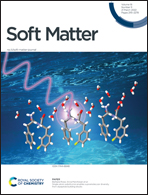Moving cracks in drying colloidal films
Abstract
Drying colloidal films are encountered in many applications ranging from paints and coatings to ceramic and semiconductor processing. In many cases, shrinkage stresses are generated during drying, which can fracture the film. While much of the previous experimental and theoretical work has focused on cracking in static cracks, there are very few studies on the dynamics of cracks in colloidal coatings. Here, we derive an analytical solution for the stress, displacement, and pressure fields near the crack tip for a steadily moving crack. We consider first the two extreme cases, namely, the undrained limit where the crack motion is much faster than the Darcy flow rate and the opposite extreme of very slow crack propagation, the drained limit. Next, we consider the general case where the timescale for crack-tip motion is comparable to that for the interstitial flow. The results incorporate the micro-structural details of the system including the particle volume fraction and nature of packing, and the mechanical properties of the particles such as shear modulus and Poisson's ratio. While the predicted results are in line with those for brittle materials, the predicted crack speeds are at least an order of magnitude higher than those observed in experiments. We conclude with the possible reasons for the discrepancy.



 Please wait while we load your content...
Please wait while we load your content...